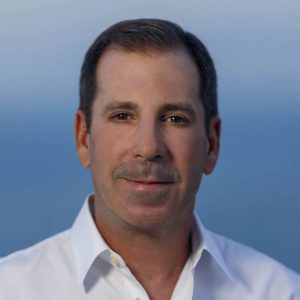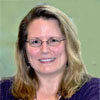
Mark Sanna, DC, ACRB Level II, FICC
The field of regenerative medicine includes emerging therapies that have the potential to heal damaged and painful tissues in ways that were unheard of just a few short years ago. Regenerative therapies have the potential to fully heal injuries and damaged tissues that might otherwise be beyond repair. They provide an alternative to more invasive interventions such as surgery and lessen the risk of developing dependence opioids.
Our aging population has created a growing demand for alternative therapies to maintain their level of function and avoid the impact of chronic diseases such as diabetes, heart failure, and degenerative joint, bone and nerve conditions. The cell therapies that comprise by regenerative medicine hold the promise of health care solutions are based upon the concept that the body heals from within. This is an idea that most chiropractors will be very familiar with. However, if you’re not yet familiar with regenerative therapies, the time to learn is now.
Regenerative Medicine Is Not New
The earliest form of cell therapy was the transfusion of blood, which is now commonplace in clinical settings. Next on the list was the transplantation of bone marrow, giving patients with radiation damage or blood cancers a chance to make new, healthy blood cells using the donor’s bone marrow stem cells. Cell therapy using a patient’s own cells is also used in cases of severe burn and scald injuries when a patient does not have a sufficient amount of undamaged skin for skin graft treatment. The first organ and bone marrow transplants were performed decades ago. Today, advances in cellular and developmental biology and immunology have opened the door to the refinement of existing therapies and development of new ones.
Regenerative medicine typically takes three interrelated approaches:
- Rejuvenation: methods which boost the body’s ability to self-heal. Even tissues that were once thought beyond the ability to heal once damaged such as nervous tissue have been shown to be able to remodel and to some extent self-heal.
- Replacement: the use of healthy cells and tissues to replace damaged ones. These tissues may come from living or deceased donors. Examples include organ
- Regeneration: the delivery of special types of cells and cell-based products (stem cells) where they restore tissue and organ function.
Stem Cells are Master Cells
Stem cells are a key component of regenerative medicine. The body uses stem cells as one way of repairing itself. Studies have illustrated that if adult stem cells are harvested and then injected at the site of diseased or damaged tissue, reconstruction of the tissue is feasible under the right circumstances. What sets regenerative medicine apart from many traditional interventions is that the latter mostly treat symptoms, whereas the former aims to treat the root cause of a patient’s condition by replacing lost cells or organs. This is because all stem cells have the ability to differentiate, or mature, into the three primary groups that form a human being:
- Ectoderm: gives rise to the skin and nervous system
- Endoderm: forms the gastrointestinal and respiratory tracts, endocrine glands, liver, and pancreas
- Mesoderm: forms bone, cartilage, most of the circulatory system, muscles, connective tissue, and more
Stem cells can potentially produce any cell or tissue the body needs to repair itself such as skin cells, brain cells, and lung cells. This “master” property is called pluripotency. Pluripotent stem cells have the ability to self-renew. This means that they can make more copies of themselves perpetually.
Ethical Considerations and Debate
Stem cells have garnered a lot of media coverage. The first research paper that reported that stem cells could be taken from human embryos was published in 1998. Since then, debates over the ethics of stem cell research have divided scientists, politicians, and religious groups. However, the most recent research has shown that there are many therapeutic options available that do not involve embryonic stem cells.
The alternatives to embryonic stem cells have helped to broaden the acceptance of stem cell research and therapies. Scientists have discovered ways to take ordinary cells, such as skin cells, and “reprogram” them by introducing several genes that convert them into pluripotent cells. Researchers are just beginning to understand the subtle differences between the different kinds of pluripotent stem cells, and studying all of them offers the greatest chance of success in using them to help patients.
Regenerative Medicine and Chiropractic
Everyday regenerative medicine is making great progress. Once this new technology becomes widely used in clinical practice, the potential benefits to the US health care system and economy will be enormous. Regenerative medicine procedures must be performed by skilled medical professionals under the direction of a medical physician and are beyond the scope of most chiropractors. This means that chiropractors interested in having their patients receive stem cell therapies must make a referral to a medical doctor outside of their practice or work in collaboration with a medical doctor in a multidisciplinary practice setting.
Since its inception, the chiropractic profession has embraced non-drug health care that improves the body’s ability to heal itself. Given chiropractors’ understanding of anatomy and the self-healing nature of the body, it makes sense to explore alternatives to drugs and surgery that maintain the integrity of the original anatomy. Regenerative medicine provides patients with options that allow them to improve their function and quality of life and decrease their possibility of becoming dependent on harmful medications.
Dr. Mark Sanna is a member of the Chiropractic Summit and a board member of the Foundation for Chiropractic Progress. He is the president and CEO of Breakthrough Coaching (www.mybreakthrough.com 1-800-723-8423).











 Why is the Discount Challenge prize amount $11,181? Because that is the average “per-occurrence” fine for Medicare inducements. That’s not $11,181 per patient, that’s not per provider, that’s PER VISIT. Stinks, doesn’t it? To us, the prize amount is worth the investment if we can help our profession better understand proper discounting.
Why is the Discount Challenge prize amount $11,181? Because that is the average “per-occurrence” fine for Medicare inducements. That’s not $11,181 per patient, that’s not per provider, that’s PER VISIT. Stinks, doesn’t it? To us, the prize amount is worth the investment if we can help our profession better understand proper discounting.